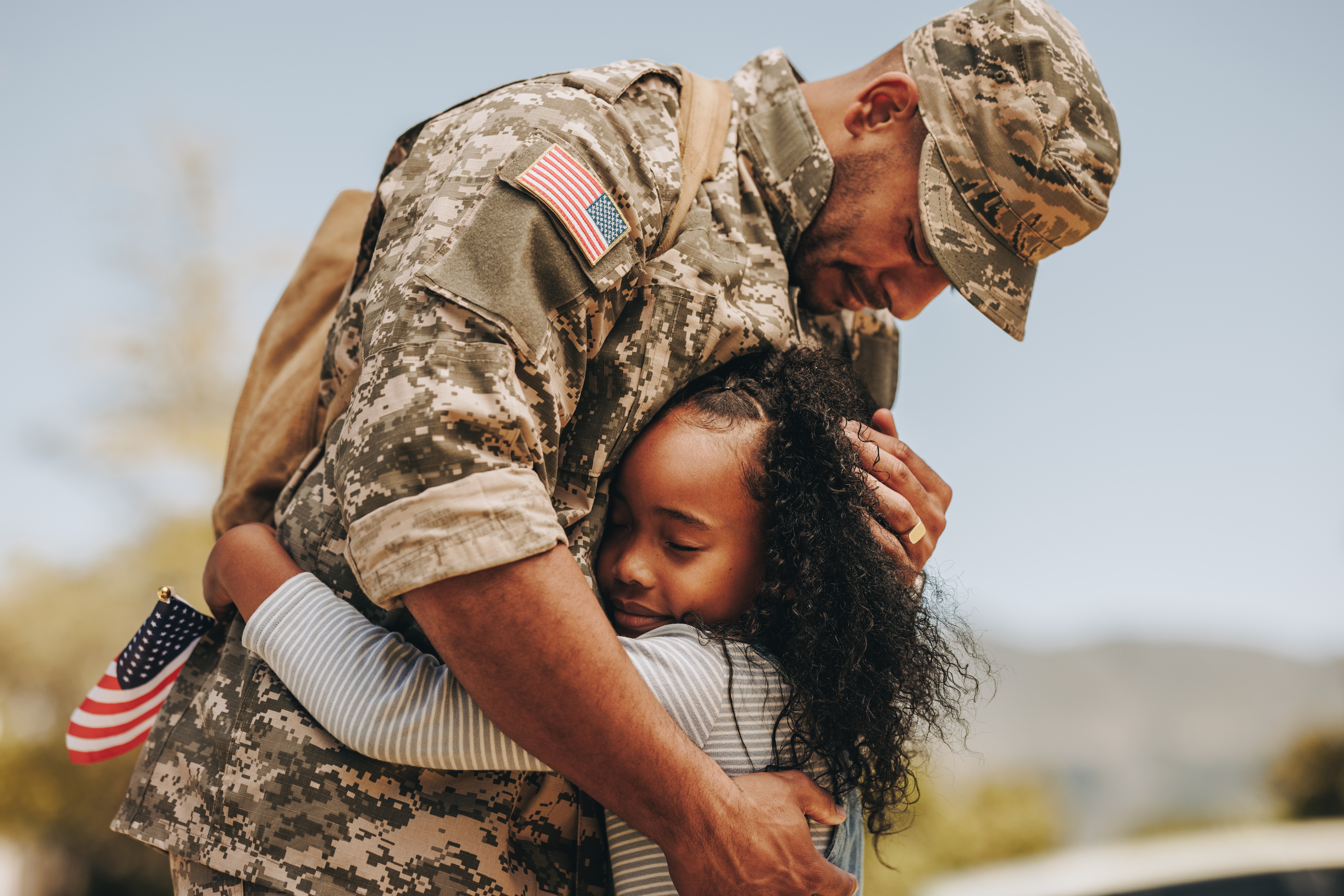HAI Group is the proud, leading sponsor of the Public and Affordable Housing Research Corporation (PAHRC), a nonprofit that researches the impact that affordable homes bring to families and communities. In this guest blog, Cate Asp, PAHRC’s Research Analyst, dives into the historical issue of veteran housing needs; how those needs have contributed to the evolution of affordable housing; and what is being done for veterans today.
Veterans face unique challenges, including housing insecurity, physical and mental health struggles, acclimating to returning home, and entering a workforce that can feel foreign to them.
Some of the nation’s oldest affordable housing programs are rooted in supporting production efforts during World War II to help veterans improve their housing security and transition back to civilian life. To this day, affordable rental housing programs continue to provide stability for 379,000 veterans and their families. Many more are assisted by homeownership programs targeting families that have served.
During World War II, 20 public housing developments were built around military manufacturing plants to support the war effort. When the war ended in 1945, an influx of service members created a severe housing shortage in the United States. In anticipation of this influx, Congress passed the G.I. Bill of Rights in 1944 to create temporary aid for veterans. This bill included short-term unemployment benefits, training, education compensation, and housing assistance.
The G.I. Bill aided millions of veterans, doubling degrees awarded between 1940 and 1950, as well as catalyzing the construction of 200,000 new homes a year during this decade. This assistance did not solve the housing crisis; however, nor did it reach everyone in need. The distribution of aid was influenced by historic and ongoing racism in the United States, causing Black veterans to be frequently denied the loans they had an equal right to, particularly in the south.
The needs of veterans also influenced rental housing programs by illuminating the important contributions people living in affordable homes make to their country, community, and family. Veterans were central to the discussion of affordable housing after the war, which increased public support to expand funding for affordable housing programs and serve additional populations in need. Affordable housing programs began establishing admission preferences for veterans. The G.I. Bill, created to improve housing stability for veterans, highlighted the private market’s ability to play an effective role in building affordable housing, paving the way for public/private partnerships. Today, the largest affordable housing program in the United States involves the private sector: the Low Income Housing Tax Credit (LIHTC) is a program that allows private partners to receive tax credits for investing in affordable rental housing.
Unique needs persist
Today, veterans still face similar challenges to the ones seen in 1945. Challenges are particularly high for post 9/11 veterans, who are 5% less likely to be able to afford housing compared to their civilian peers, even after controlling for wages, household size, and housing market.
While the gap has been lessening, veterans also continue to be over-represented in the homeless population, meaning they are more likely to be homeless than their civilian peers. Those living in rent-assisted housing are also coping with mental and physical health issues. Assisted renters are more likely to have been diagnosed with, or have symptoms of, depression and anxiety, further highlighting the need for widespread support.
Thankfully, veterans still receive support from housing programs. As of 2021, 379,000 veterans received support through rental housing programs. Established in 1992, but receiving increased support since 2007, HUD’s Veterans Affairs Supportive Housing (HUD-VASH) program has positively impacted the lives of tens of thousands of veterans. This program provides Housing Choice Vouchers to homeless veterans and partners with the Department of Veterans Affairs to also offer case management and health resources.
While originally established for homeless veterans with substance abuse and other mental health disorders, today HUD-UDHUDVASH aims to reduce veteran homelessness, provide veterans with a stable housing environment, and increase access to healthcare services for all veterans who qualify.
One study found that for every voucher administered through HUD-VASH, permanent housing increased by 0.9 and veteran homelessness decreased by 1, meaning that this program successfully reduces veteran homelessness. In addition, this study estimated that without the existence of HUD-VASH, there would have been over three times as many homeless veterans as of 2017 than there actually were. Another study found that the original intention of the program is succeeding as well, with VASH successfully reducing rates of alcohol and drug abuse.
While HUD-VASH is an important tool for supporting veterans, not all former service members are eligible. Veterans must not have received either a Dishonorable Discharge or a Bad Conduct Discharge (from a general court-martial) to qualify. Unfortunately, some LGBTQ+ service members who were discharged due to their sexuality received a dishonorable discharge or bad conduct discharge, leaving them ineligible for HUD-VASH. The Department of Veterans Affairs continues to encourage LGBTQ+ service members to reach out to get their discharge changed.
How housing agencies can help
Public Housing Authorities can make a difference for veterans. Here are some options to consider:
- Apply for VASH vouchers.
- Give waiting list preference to veterans.
- Ensure new and old units are accessible to those with mobility issues.
- Implement landlord recruitment campaigns for veteran housing.
- Develop target service partnerships that support veterans’ mental and physical health needs.
 Source: 2015 PAHRA Best Practices Showcase & Bellamy Awards
Source: 2015 PAHRA Best Practices Showcase & Bellamy Awards
A notable example of implementing landlord recruitment campaigns and challenging themselves to serve more veterans comes from the Allegheny County Housing Authority (ACHA) in Pittsburgh. In 2014, the ACHA participated in a housing boot camp, aiming to house 135 veterans in one hundred days. Partnering with multiple organizations including the Department of Veterans Affairs and United Way, the ACHA had immense success. Using ads displayed on buses and at local businesses, they recruited an astonishing 229 landlords and housed 489 veterans by the end of the campaign.
While the state of veterans' housing and security has improved over time, there is still progress to be made. Whether you are a housing authority member, a landlord, an advocate, or simply someone interested in learning more on how to help veterans, there are many ways to get involved and provide support.

.png)



